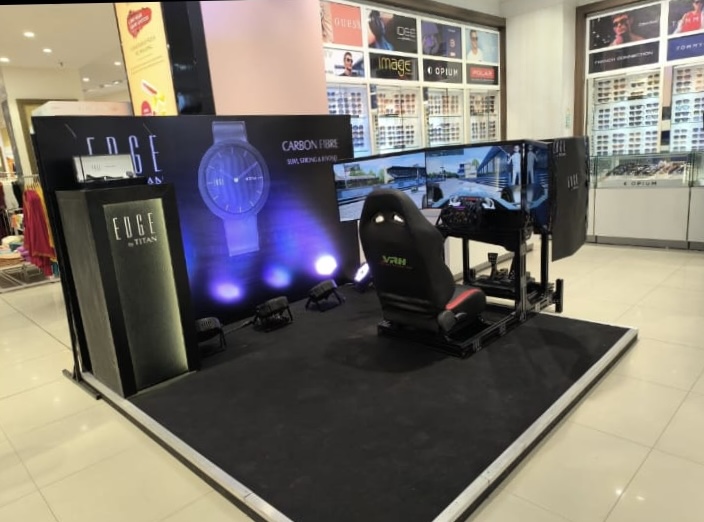If someone had told me a few years ago that virtual racing would start competing with big esports like FPS titles and MOBAs, I probably would’ve laughed. Back then, sim racing felt like a niche hobby, something only gearheads and a few hardcore gamers cared about. But 2025 has completely flipped that narrative. Sim racing isn’t just “growing”; it’s blowing up faster than almost any other competitive gaming category, and if you’ve looked around lately, you’ve probably noticed the shift yourself.
The crazy part? It didn’t explode because of just one thing. It’s a mix of tech improvements, cheaper hardware, online communities getting huge, and honestly… people finally realizing how fun it is to race without the fear of totaling a car worth more than their yearly salary.

Accessibility Has Finally Caught Up
Let’s start with the biggest factor: anyone can get into it now. The barrier used to be pretty high, at least if you wanted something realistic. But these days, you can grab an entry-level wheel and pedals for less than the cost of a new console game. I’ve seen beginners start with budget gear and still end up competitive in community races within weeks.
And the games? There’s something for everyone:
- F1 for fans who love precision
- Gran Turismo for console racers
- Assetto Corsa for mod addicts
- iRacing for the most serious competitors
- And free-to-play options like RaceRoom for anyone testing the waters
You don’t need a thousand-dollar rig to have fun anymore. Honestly, the “cheap but good” hardware trend might be the biggest reason sim racing is expanding so fast in 2025.
The Realism Is On Another Level
There’s a point where a game stops feeling like a game and starts feeling like a simulation, and sim racing keeps pushing that line forward. Laser-scanned tracks, dynamic weather, and detailed tire physics; these features used to be a luxury. Now they’re the norm.
One thing I’ve noticed personally is how quickly people get hooked once they feel proper force feedback for the first time. The wheel tugs, pulls, and vibrates; suddenly, your brain believes you’re actually behind the wheel. It’s weird how convincing it is.
Professional drivers caught onto this long ago. A ton of real-world racers use sims for practice, and they talk about it openly now. Formula One drivers, NASCAR drivers, GT3 racers, you name it. When newcomers see pros treating sim racing seriously, it instantly boosts the credibility of the entire scene.
Esports Tournaments Have Gone Mainstream
Five years ago, sim racing competitions felt like these chill livestream events with a couple thousand viewers. Now? Tournaments are packed, sponsorships are flowing in, and the production value looks like real motorsport.
The big ones like the F1 Esports Series or Gran Turismo World Series pull in massive audiences. Even smaller leagues are getting traction because viewers enjoy something that combines the excitement of motorsport with the unpredictable chaos of online gaming.
And the wild thing is how easy it is to join a league. You don’t need a team, a coach, or a massive time commitment. There are casual leagues on Discord that run weekly, and you can just hop into a race after dinner. It feels way more welcoming than traditional esports, which usually require grinding for years before anyone notices you.

Creators and Streamers Are Fueling the Fire
I swear half of sim racing’s growth is thanks to content creators. Streamers showing crashes, clean laps, weird moments, aggressive overtakes, this stuff spreads fast. There’s something incredibly satisfying about watching someone push a car to the limit, even if it’s digital.
Influencers helped normalize sim racing as entertainment, not just a “tech hobby.” And that shift matters. If you’ve ever fallen down a YouTube rabbit hole of sim racing clips, you know how addictive it can be.
Brands also took notice. Hardware companies, game studios, and even car manufacturers sponsor teams and creators now. Once big money enters the scene, growth becomes almost guaranteed.
Cross-Platform and VR Support Changed the Player Base
Sim racing used to be PC-only if you wanted a serious experience. That’s no longer true. With the graphics power of modern consoles like the PS5 and Xbox Series X, console players get almost the same level of realism as PC racers.
Then there’s VR.
If you’ve ever tried VR racing, you know how big a deal it is. You look left, and you see the rival car. You look behind you and see the pack chasing you. It’s immersive in a way monitors simply can’t match. VR headsets keep getting cheaper and better, and more players are trying them for the first time this year.
This multi-device compatibility helps the entire scene grow. More accessibility equals more players. More players equals more competition. And more competition always pushes esports upward.
It Offers Something Most Esports Don’t: A Path to Real Motorsports
This part is kind of crazy but very real. A handful of sim racers have already made the jump to real-world racing. GT Academy proved it years ago, and since then, the list has only gotten longer.
That dream, however unlikely, is part of sim racing’s charm. You can start with a cheap wheel in your bedroom, grind for a few months, join leagues, get noticed… and who knows? Maybe you get invited to a real track day one day.
No other esports offer even a tiny chance of crossing into a physical professional sport. That unique bridge between digital and real racing gives sim racing an edge that nothing else has.
So, Why 2025? What Changed Now?
It’s the perfect storm:
- Hardware prices dropped
- Physics and graphics improved
- Esports infrastructure matured
- The creators made sim racing fun to watch
- VR brought the immersion people craved
- leagues became beginner-friendly
Sim racing has been building toward this moment for years, but 2025 is where everything finally lined up.
And if you’re thinking about getting into it, start simple. A basic wheel, a game you enjoy, and some patience are all you need. You don’t need a full racing cockpit right away, though once you get hooked, you’ll probably end up wanting one.






